Continuing with the Indiana courses...
Since Clyde just recently joined I thought I would show you some of his work.
For many years, one of the most affable golfers on the professional circuit has been Indiana native Fuzzy Zoeller. Late in his career he began to dabble in the course design industry and partnered with Clyde Johnston. Their first venture would be in Zoeller’s backyard. They would create what would become the home club of the famed player in Sellersburg, Indiana. A small covered bridge to traverse a stream running through the course would prove to be the inspiration for the name of the facility. Zoeller’s home course would be titled the Covered Bridge Golf Club.
The bridge

The course is quite an effort by Zoeller and Johnston to produce a quality course at the base of Floyds Knobs. The quickly changing terrain would normally be difficult to deal with but a piece was located that had subtle movement with the only severe change in elevation being from the clubhouse down to the ninth and eighteenth greens. The rest of the landforms were worked into the routing of the course marvelously by Johnston and the player very seldom can even tell that they are running down or up hill. A natural stream is also in play on a couple of holes. Some irrigation ponds also come into play on several holes throughout the routing. Though housing abounds on the exterior of the course, much of the land was primarily devoted to golf and aside from a few of the exterior hole, there is not evidence that a large community is just outside the trees.
As would be expected with any course that is the home of a touring professional, course upkeep is at a premium. Covered Bridge is simply one of the more beautiful public courses in the state. It has all the amenities and look of a private small town country club. The fairways, greens and rough are very well manicured and presented as well as possible every day. That maintenance also is used to allow the course play up to its true potential as the fairways allow some run and the greens are fairly fast. Fairways are maintained at an adequate width to take advantage of the strategic aspects of the holes laid out by the architect. Something else that is obvious after going around is that trees do not crowd the holes as you would expect on many woodland courses of this nature.
The greens at Covered Bridge were in exemplary form. They all seem to work with the natural slope of the terrain and have some common characteristics. The slope is often from one back corner towards the opposite front corner of the green. This varies from hole to in the direction and degree of slope. Many of the greens also feature slight ridges splitting the green or shallow bowls on one particular corner. The greens are also very large in some instances and provide ample room for the higher handicap to avoid hazards but still find the green in regulation. But there no straight putts to be found at Covered Bridge unless one is going directly into or down the slope of the green. To do that requires luck or extreme skill from local knowledge. The home town player has an extreme advantage in this case for any matches.
The bunkering at Covered Bridge is both understated but very prominent at the green end of the holes. Fairway hazards are not the priority so there is less pressure on the drive. Perhaps the most vexing hazards are the links style pot bunkers put in by Johnston that are placed around the greens. But the course does not rely solely on these. Many of the greens are angled and have gorgeous hazards laid out along the entire side of the green. Water comes into play on a little over half of the holes in the form of the Muddy Fork and several irrigation ponds. In many instances though the ponds are alongside the holes and do not come into the line of play.
Holes of note:
Hole 3 – 196 yards - A shortish par three with the entire tee shot having to clear water. It is perhaps the most photogenic hole on the course and provides a wonderful setting when one looks back with the fifth green and covered bridge in the background.
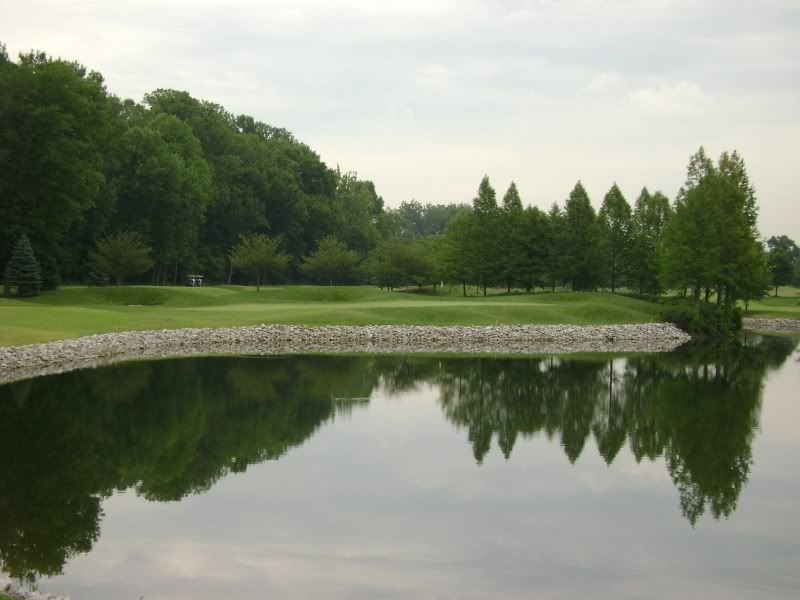
Hole 5 – 531 yards - A double-dogleg par five with the second shot and possible approach to the green pinched by the pond on the right. A nice hole.
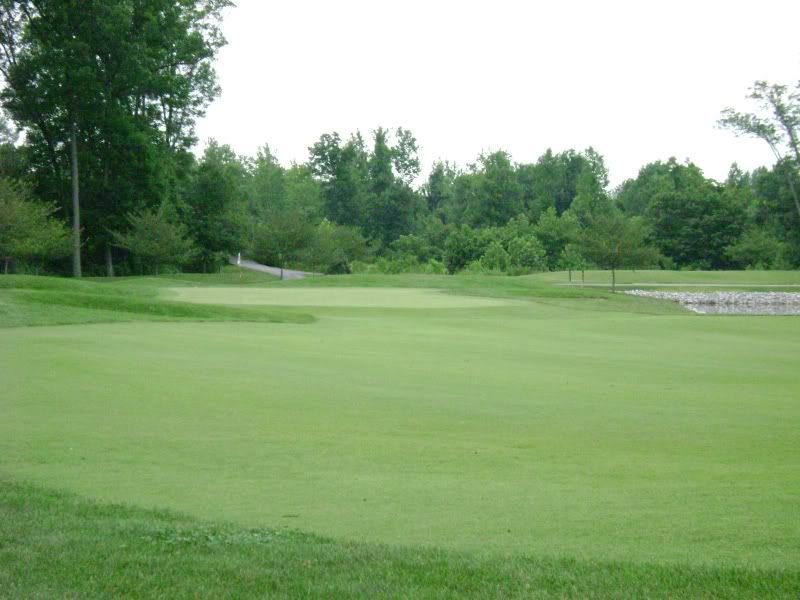
Hole 7 – 423 yards from the tips (372 from the next tee marker) - The seventh kicks things off with a wonderful short par four that features a cape-style green with the second having to clear water and bunkers as the green seemingly juts out into nothingness.
The approach
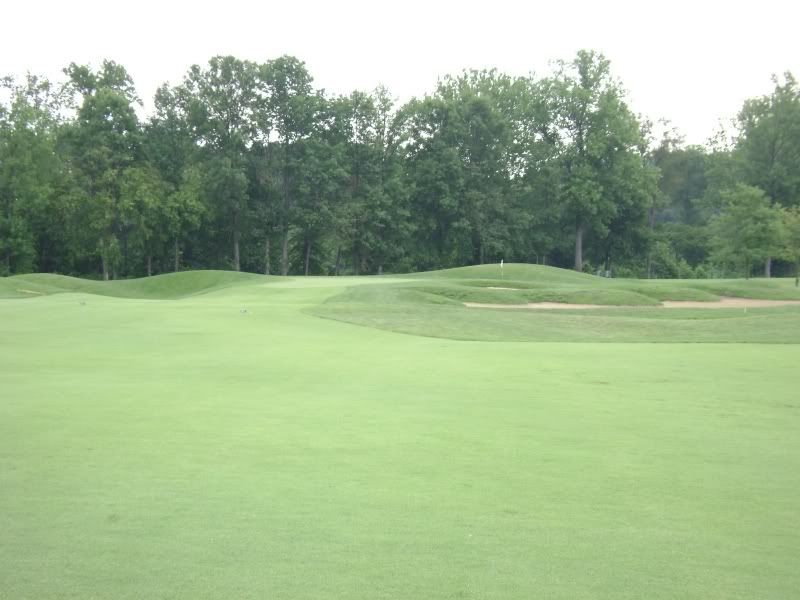
From the left of the green with the 8th in the distance
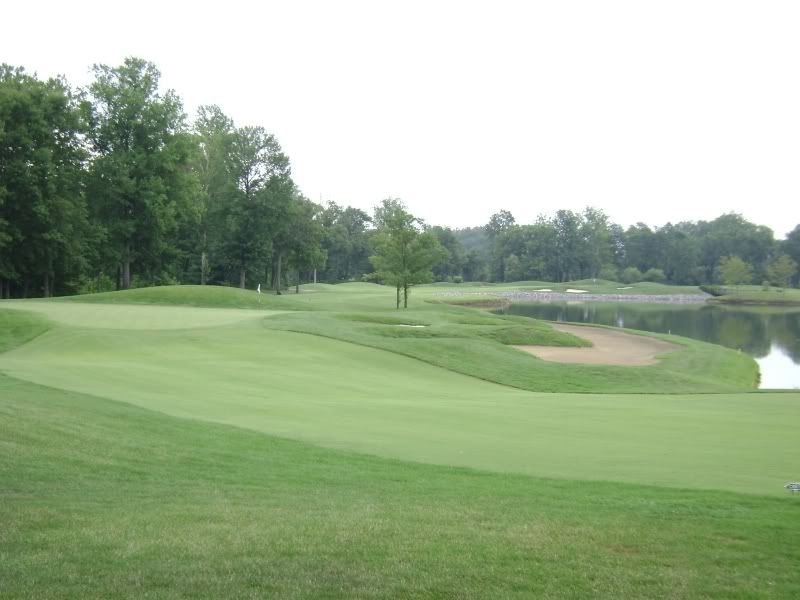
Hole 8 – 195 yards - A stellar par three then follows and provides an alternate avenue of play for those that are afraid of the Herculean shot over the water and sand to the slightly elevated green.
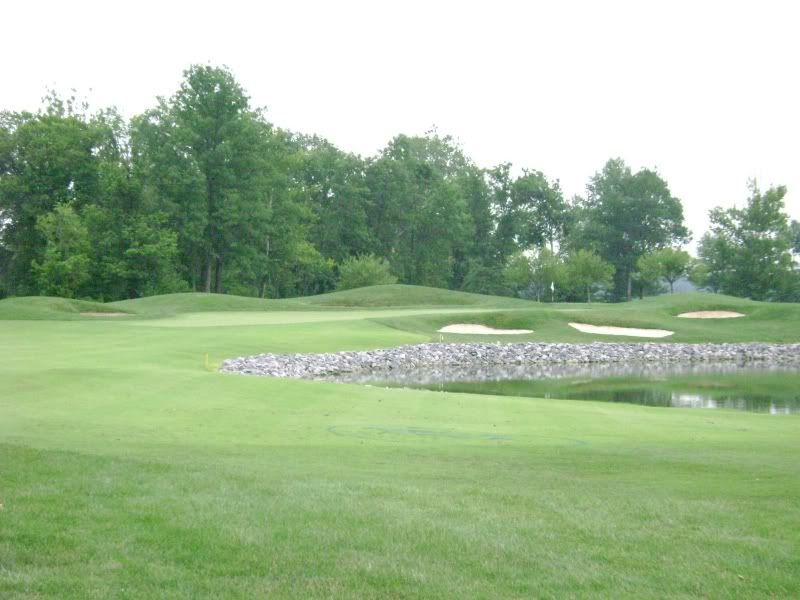
Hole 10 – 391 yards - My favorite hole on the course then starts the back nine with a downhill drive with a fairway that is bisected by a natural stream bed that sometimes has water in it. The hole then runs back uphill with the rest of the hole angled along the line of the stream bed. The green is placed into a natural hollow with only two small pits protecting the narrower back section of the green. The putting surface runs naturally from left to right towards the stream. This is one of those rare instances where it appears as if the architect found the hole and just grassed it over properly.
From the tee
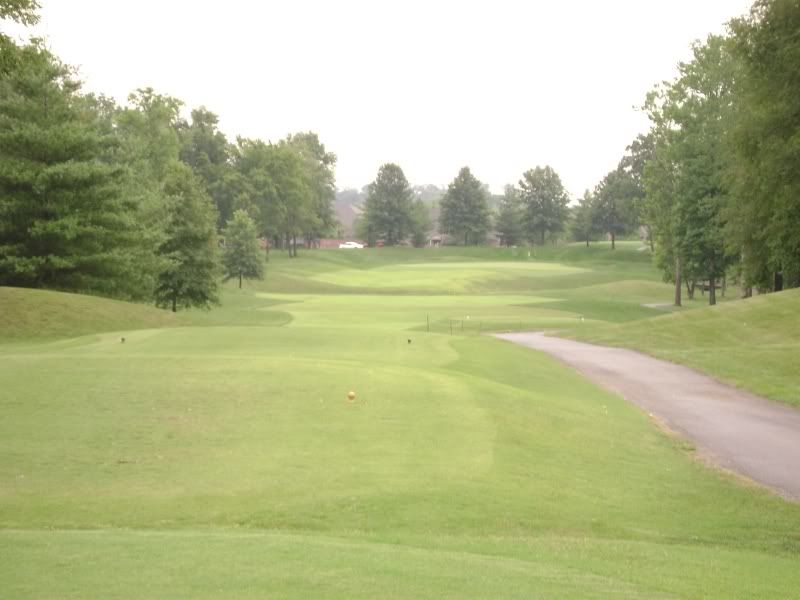
The approach
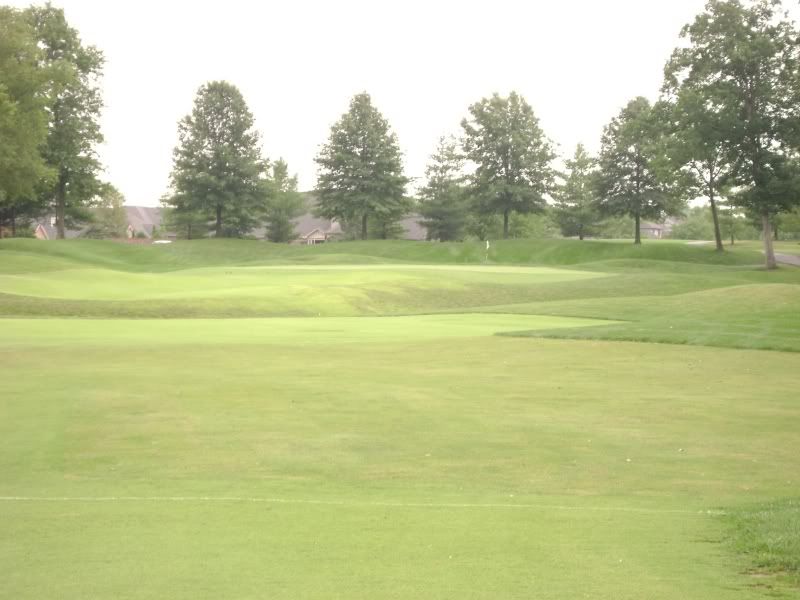
Hole 12 – 192 yards - The twelfth exquisitely uses a stream and uneven terrain to create a great short hole.
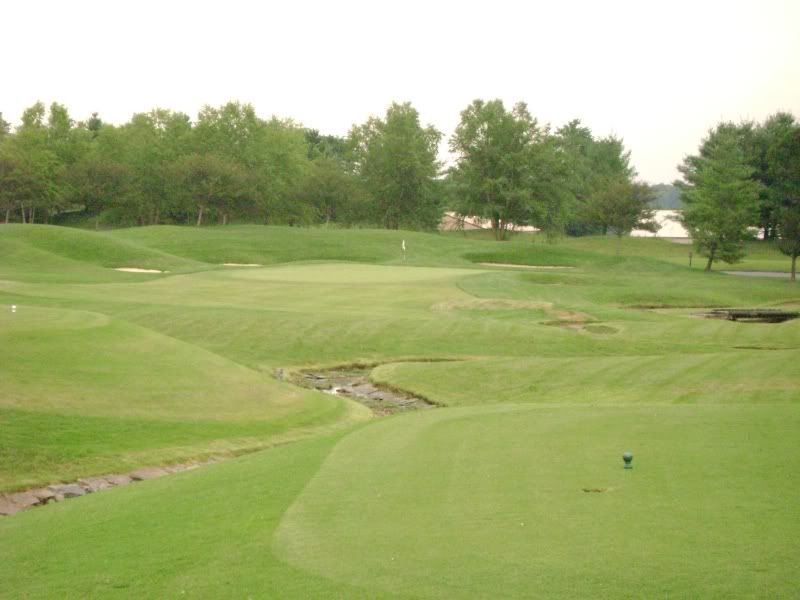
Hole 13 – 414 yards - An excellent downhill par four with a difficult approach
From behind you can see the change in elevation.
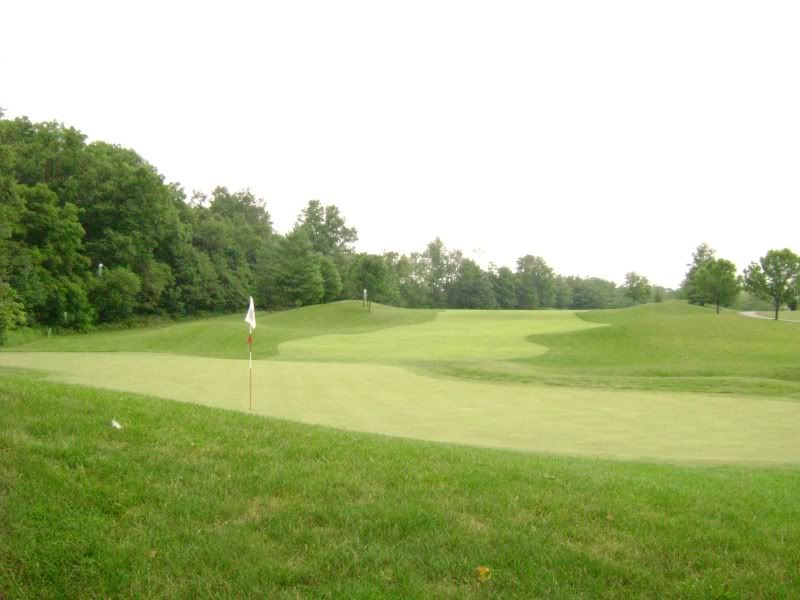
Hole 14 – 525 yards - The shot into the green is complicated by the center pot bunker in front of the green. A wonderful addition by the architect.
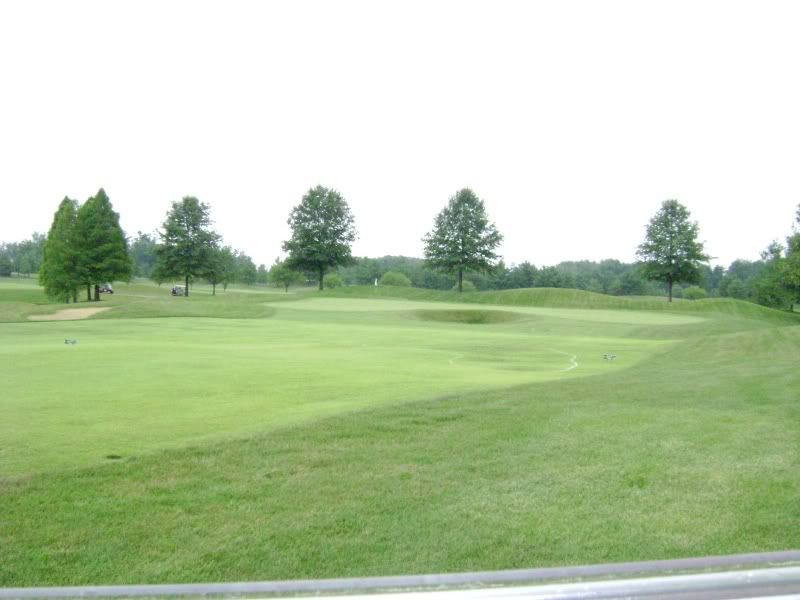
Hole 15 – 371 yards - Fifteen is a short par four with a tight landing area and a hidden green. The green is concealed by a deep sand pit that protects the entire front of the wide putting surface. This is the only hole on the course that requires a directly aerial attack and one of those a round is not a bad thing. The green is split by a spine in the middle and falls off to the side in both directions placing a premium on being on the correct side for your birdie putt.
View from the right rough.
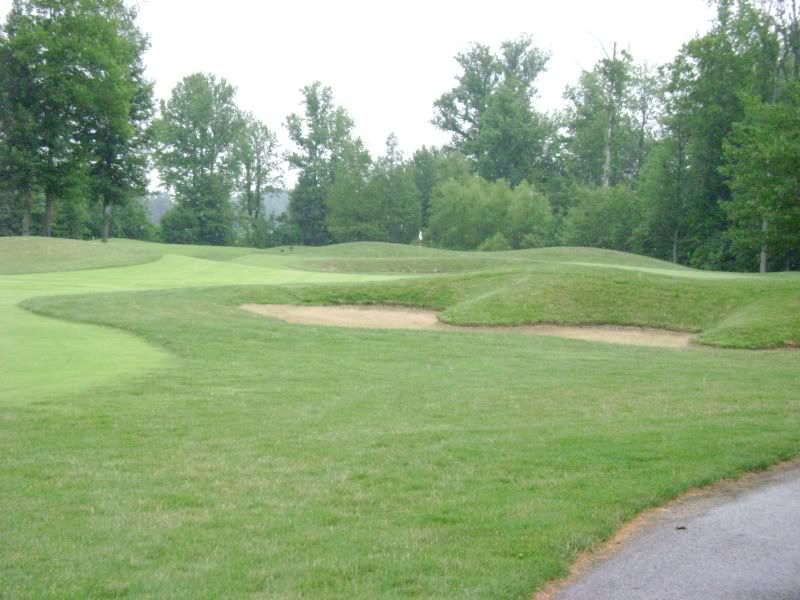
Holes 9 and 18 – 597 & 563 yards respectively - The eighteenth and ninth holes seem to be linked all the way up the hole as they play with two lakes splitting them. A shared landing area in the middle of the holes with some bunkers and a green that spans nearly one hundred yards from side to side dominate the holes and provide a unique feature.
The shared green
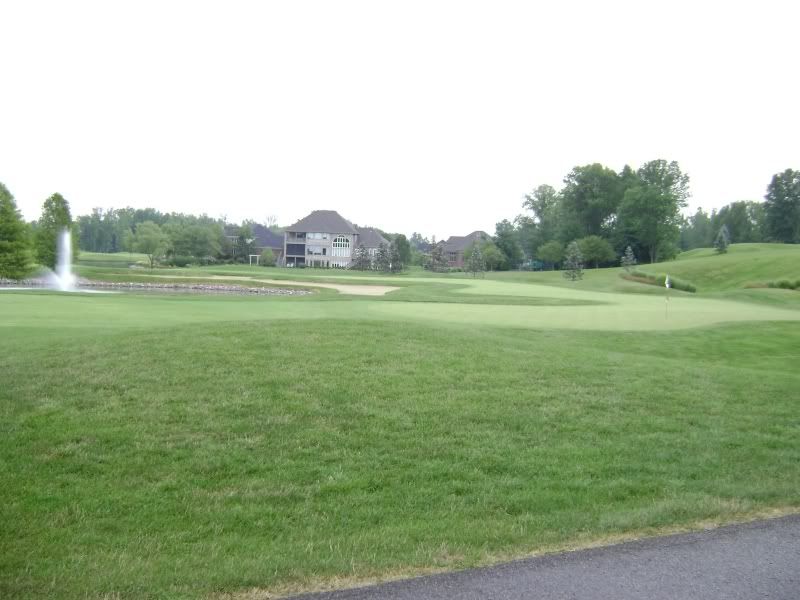
The view from just below the clubhouse.
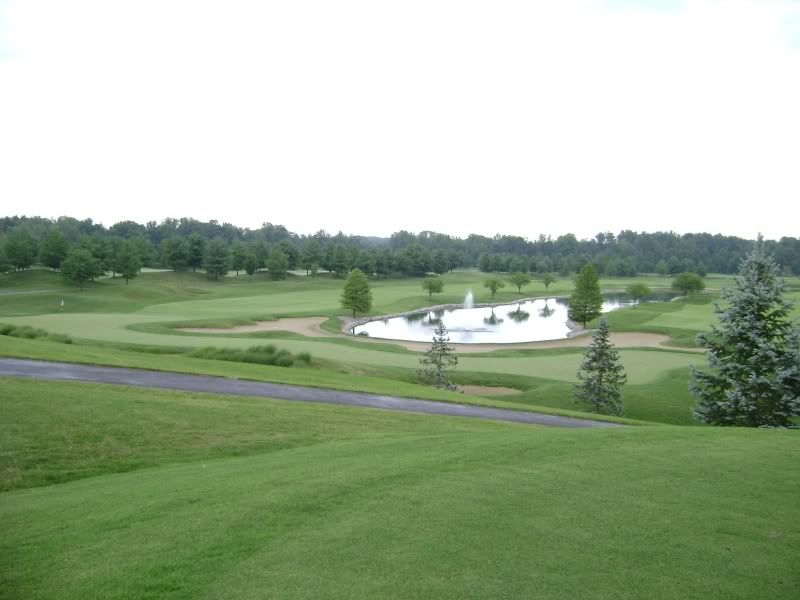
One of the highlights of any round at Covered Bridge is the large clubhouse that overlooks the holes that complete each side of the course. Sitting on the patio and watching others play up the holes makes for a wonderful view. Covered Bridge conveys the feeling of belonging to a exclusive club and having all the benefits of such membership. It truly exhibits the nature of a country club for a day. That is really all that Fuzzy wanted of the course anyway.
Just in case you forget who is responsible for the club being here.

Other courses by Johnston in Indiana include Timbergate in Edinburgh, Chestnut Hills in Fort Wayne and the newly opened Champions Pointe in Memphis, just north of Covered Bridge.